#Romantic era fashion
Text


Speaking of sheer fabric, let's hang out in 1830 today. The 1830s are one of my favorite decades for the absolute bonkers direction things went in. Skirt hems went up, waistlines dropped, crinolines puffed, sleeves swelled, and hair went miles high with every kind of adornment you could imagine. For a truly exciting experience, search for hairstyles of the period and you'll see that the whimsical designs in Bridgerton weren't far off from the truth (just in the wrong decade).
This delightful dress employs aerophane in the construction of the flowers. Aerophane is unusual sheer, made of silk, and was only used until around the 1870s--but it had a lot of ideal qualities for the time. First, it had a beautiful shimmer, which caught the light of ballrooms for lovely effect. Secondly, it was ideal for embroidering and shaping, as it had an elasticity other sheers and nets did not have. Lastly, it held shapes, pleats, twists, and rosettes very well, so you could achieve remarkably artistic whimsy in borders and embellishments.
Here, the silhouette is absolutely darling. The pleats at the top of the bodice and that swooping neck hearken to the next two decades of peak Young Victoria.
From FIDM.
#costume history#historical costuming#silk dress#costume#history of fashion#threadtalk#fashion history#textiles#romantic era fashion#romantic era#extant garments#aerophane
544 notes
·
View notes
Text
Wedding Dress Wednesday 👰

This ca.1834 wedding dress from the V&A Collection has that quintessential 1830s silhouette. The shoulders are sloped, the skirt is voluminous and the sleeves are massive.
Description from the V&A website:
"Wedding dress consisting of a pelisse robe with large sleeves and bell shaped skirt. It is made of white muslin with self coloured cotton embroidery in a formal floral pattern. There is a bow of satin at ankle height, in the front of the skirt. The dress is lined with silk and fastens at the neck and waist with black metal hooks and eyes. There is an additional silk tying ribbon inside the waist."

https://collections.vam.ac.uk/item/O166833/wedding-dress-unknown/?carousel-image=2010EG1364
#19th century fashion#1830s#romantic era fashion#wedding dress#wedding gowns#fashion history#pelisse
264 notes
·
View notes
Text
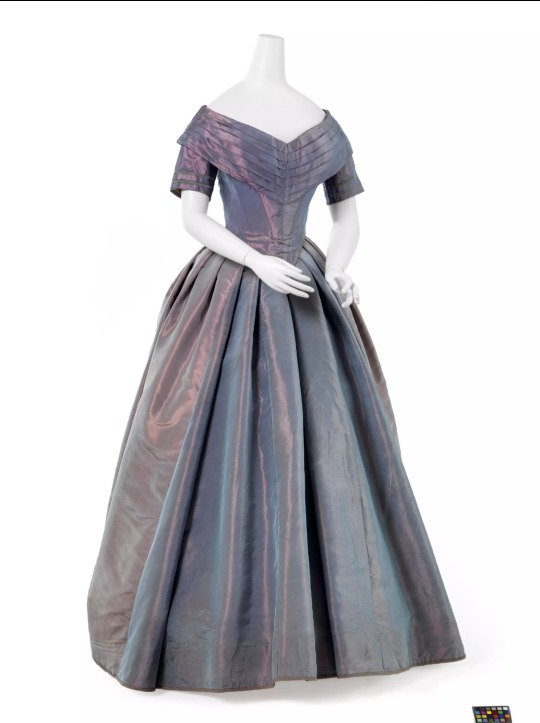

Ball Gown
1840-1841
#historical fashion#fashion history#19th century fashion#19th century#victorian fashion#1840s fashion#romantic era fashion#romantic era#victorian#ball gown
286 notes
·
View notes
Text
The Romantic Fashion Era

Jan Adam Kruseman (Dutch, 1804-1862) • Portrait of Alida Christina Assink • 1833 • Rijksmuseum, Amsterdam
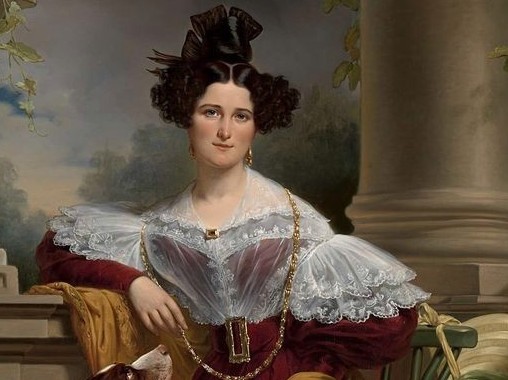
The sitter for this portrait is dressed in classic Romantic style. The leg-o-mutton sleeves and pelerine (lace covering over the shoulders) create the width at at the top of the outfit that characterized the silhouette of a women's outfit.
From 1830 to about 1835, fashion was all about extravagant proportions in the shoulders and a tiny waist accentuated further with a belt or sash.
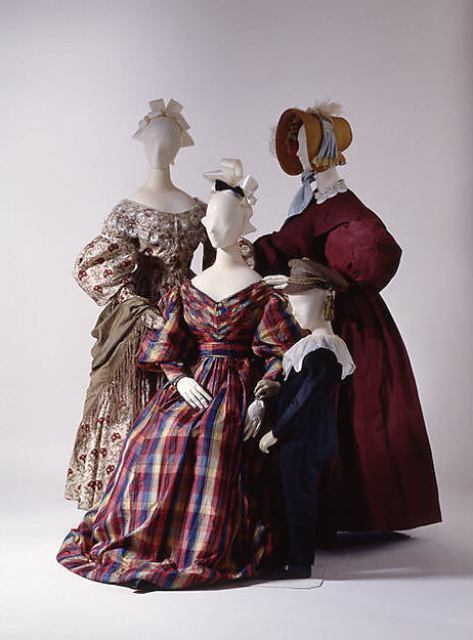

Notice Alida Christina's hair – straight on the upper third of the head, ending with a pouf of curls on each side. It's difficult to tell what is hair and what is a dark ribbon in the portrait, though it was common for the hair to be formed into a top-knot and decorated with ribbon, feathers and fancy pins, in addition to the curls in other locations on the head. It must've taken hours to achieve such perfection and I can imagine the frustration for the girls and women whose hair wouldn't cooperate! Not to mention the frazzled nerves of a poor lady's maid.
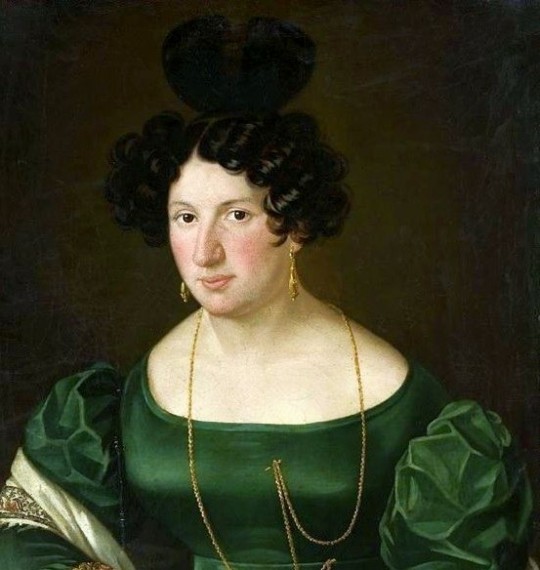

The Rijksmuseum website has a biographical snippet of Alida Christina Assink:
This portrait of Alida Assink presents her in her finest attire, depicted from head to toe. That is quite exceptional, as the painter Kruseman typically reserved such a full-length portrait exclusively for royalty. Assink was 23 years old when this likeness was commissioned by her guardian, a wealthy landowner. The rural setting with hunting dog and garden vase harks back to the English portrait style, which Kruseman admired.
#art#portrait#painting#fashion history#art history#dutch artist#woman's fashion history#romantic era fashion#1830s hair styles#female portrait#society portrait#fine art#the resplendent outfit blog#fashion history timeline#art & fashion history#rijksmuseum
20 notes
·
View notes
Photo

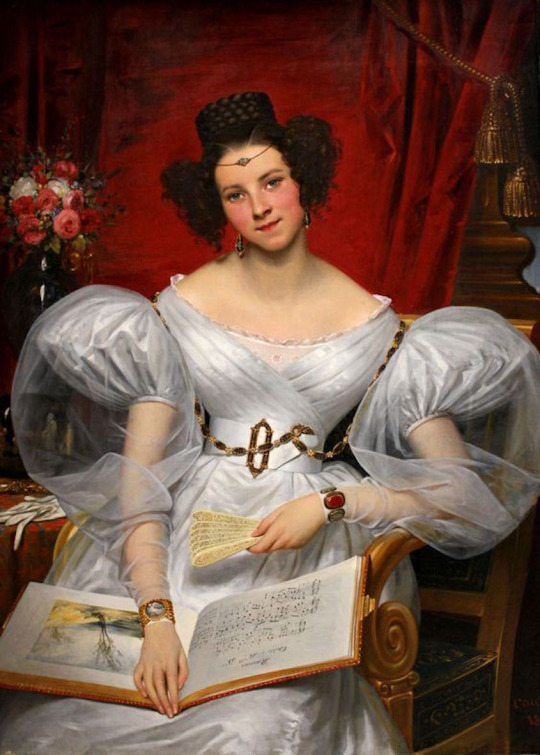




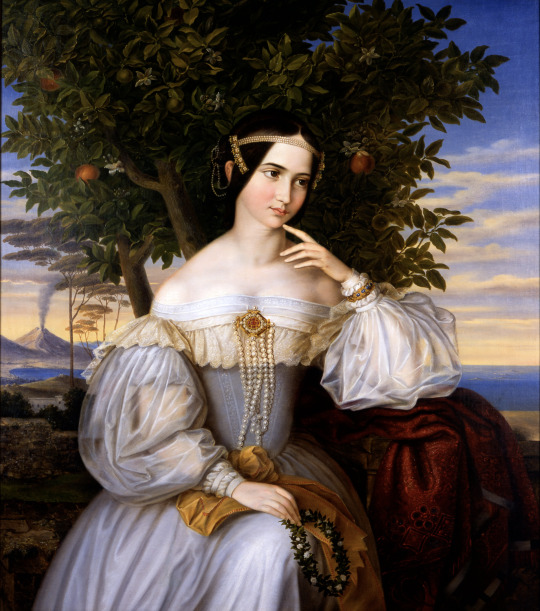
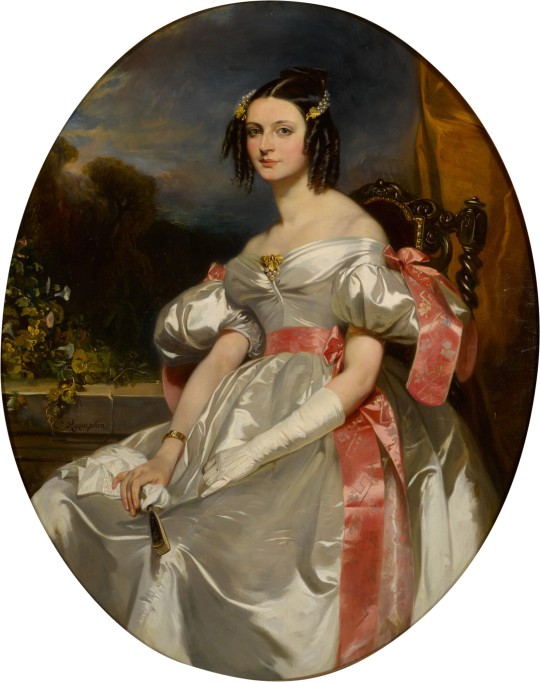
More pre-Victorian 1830s (from top to bottom) -
ca. 1830 Evening or wedding dress (location ?). From tumblr.com/andrayblue 1080X1350.
1831 Marquise Chasseloup-Laubat (probably Marie Augustine Antoinette Le Boucher des Fontaines) by Joseph-Désiré Court (Musée des Beaux-Arts de Rouen - Rouen, Normandie, France). From their Web site' enlarged by half 845X1181.
1830-1832 María Cristina de Borbón, Queen of Spain by José de Madrazo y Aguado (Prado). From their Web site 1280X1745.
1832 Marie Franziska von Freytag by ? (Salzburg Museum - Salzburg, Salzburgland, Austria). From tumblr.com/history-of-fashion 766X963.
1832 Amalie Klein by Friedrich von Amerling (Österreichische Galerie Belvedere - Wien, Austria). From tumblr.com/history-of-fashion; fixed spots & cracks throughout w Pshop 2893X3508.
1835 Illustration from La Mode by Paul Gavarni. From tumblr.com/clove-pinks 1650X2048.
1836 Marriage Portrait of Charlotte de Rothschild by Moritz Daniel Oppenheim (Israel Museum - Jerusalem, Jerusalem District, Israel). From Google Art Project.
Lady with Pink Sash by Camille Joseph Etienne Roqueplan (Sotheby's - 29Jan22 auction Lot 703) 1583X2000.
#1830s fashion#Romantic era fashion#Biedermeier fashion#Louis-Philippe fashion#natural waistline#Marquise Chasseloup-Laubat#Joseph-Désiré Court#cross over bodice#chemise#quarter-length puffed inner sleeves#long sheer outer sleeves#ferroniere#María Cristina de Borbón#court dress#Marie Franziska von Freytag#Apollo knot#Amalie Klein#Friedrich von Amerling#Gigot sleeves#Paul Gavarni#Charlotte de Rothschild#Moritz Daniel Oppenheim#Camille Joseph Etienne Roqueplan#waist band#full skirt
155 notes
·
View notes
Text


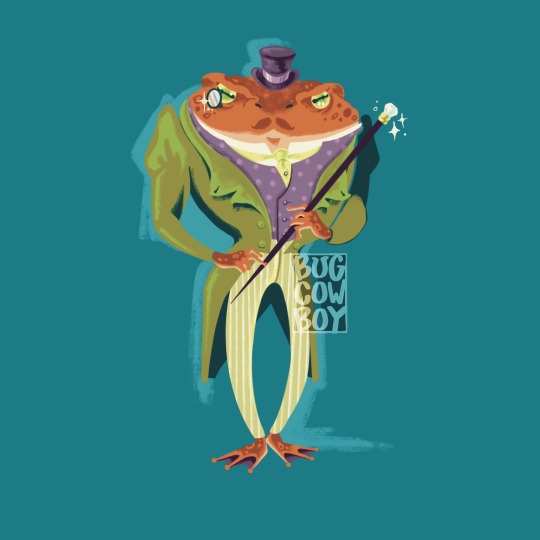
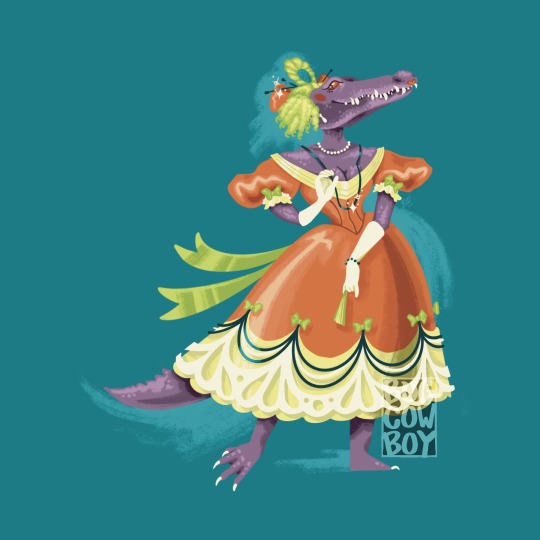
//Bayou Trio//
Romantic eta inspired fashion mixed with the critters from the swamps!
These were made after listening to Yoshi Yoshitani’s talk about pallet trios on tiktok—It seemed like the perfect way to focus on shape and color (work has been realism and grayscale lately) so I’m definitely going to be doing more! I love how these critters turned out, so out of my comfort zone!
#historical fashion#frog#toad#newt#salamander#alligator#gator#romantic era#romantic era fashion#Duke Toad has 15000 a year
9 notes
·
View notes
Text

Pelisse
1835-1840
United States or England
DeWitt Wallace Decorative Arts Museum (Object Number: 1996-273
#pelisse#fashion history#historical fashion#1830s#1840s#19th century#1835#1839#1840#united states#england#orange#purple#silk#velvet#romantic era#victorian#victorian fashion#dewitt wallace decorative arts museum
1K notes
·
View notes
Text


French dress
c. 1872
The Metropolitan Museum of Art
#1870s#historical fashion#19th century dress#historic fashion#dress history#history of fashion#fashion history#victorian dress#victorian era#victorian gown#romantic era#romantic fashion#1800s#1800s fashion#fashion#history#vintage fashion#frostedmagnolias
717 notes
·
View notes
Text

Paul Gavarni, L'Artiste: Far-Niente ("the artist doing nothing"), 1835.
#paul gavarni#Eighteen-Thirties Thursday#1830s#men's fashion#romantic era#1835#interiors#gavarni and his super-detailed scenes <3#get a load of this guy's headwrap#romanticism
323 notes
·
View notes
Text

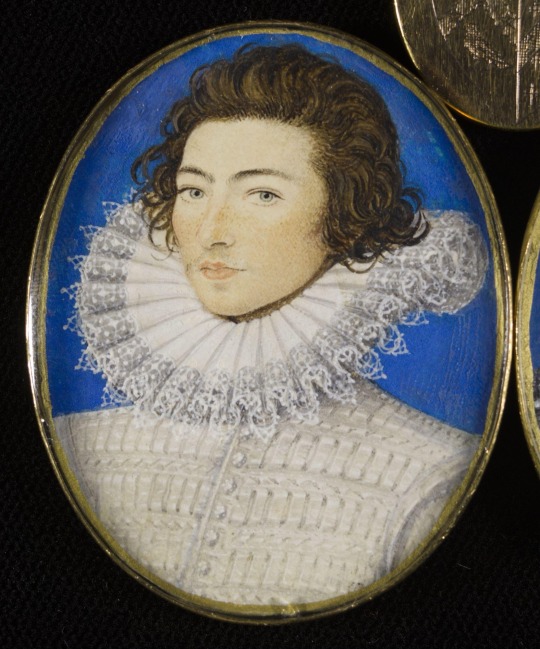

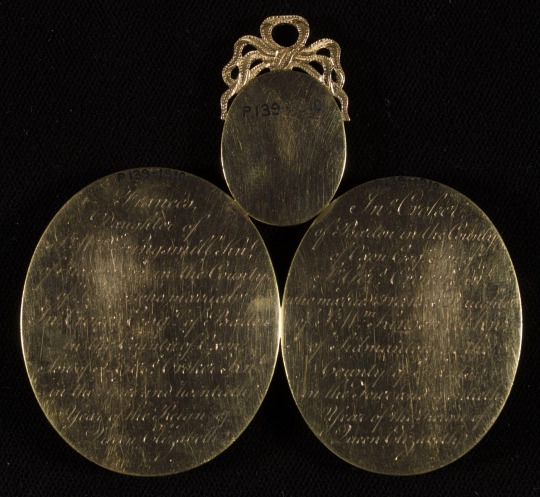
Miniature wedding portraits of Frances and John Croker of Barton by Nicolas Hilliard, circa 1581.
#freckles#early modern#early modern era#early modern period#english renaissance#english#renaissance#cool#portraits#portrait#painting#paintings#wedding#romance#love#couple#marriage#romantic#pretty#handsome#aesthetic#academia#history#fashion history#fashion#style#interesting#nicolas hilliard#elizabethan#tudor
231 notes
·
View notes
Text

Though I most frequently share gowns and dresses, that doesn't mean I'm ignorant to menswear. And especially not the magic of banyans--made recently even more popular by Our Flag Means Death. I've written rather extensively on the topic, but the short story is that from the 18th century to the late Victorian period, it became highly fashionable for men to wear at-home robes of glorious design. The word banyan (or banjan, or banian) has an interesting etymology, coming to English (it is posited) from the Tamil word vanigan, meaning trader or merchant.
Which makes sense because the existence of these robes is entirely due to colonization and appropriation. Essentially, the popularity of well-to-do men wearing silks in the style of the East was all the rage, just as it was for high status women to use patterns and elements (like the pashmina) in theirs. Just another part of the sordid history of Imperialism.
What's most intriguing about banyans, I think, is how delicate and lovely they are. Menswear took a pretty stark turn in the early 18th century, away from the decadent French fashions and color schemes for daily wear. But is certainly didn't get lost from banyans.
This one is a great example, and it dates from 1830. The figured silk is older than the pattern, having been recut to this shape from old 18th century dress silk (or even potentially another garment). Those florals! That cut! The collar!
From Kerry Taylor auctions.
#ofmd stede#ofmd#banyan#historical costuming#costume history#textiles#silk dress#late victorian fashion#history of fashion#costume#romantic era fashion
106 notes
·
View notes
Text
Floral Friday
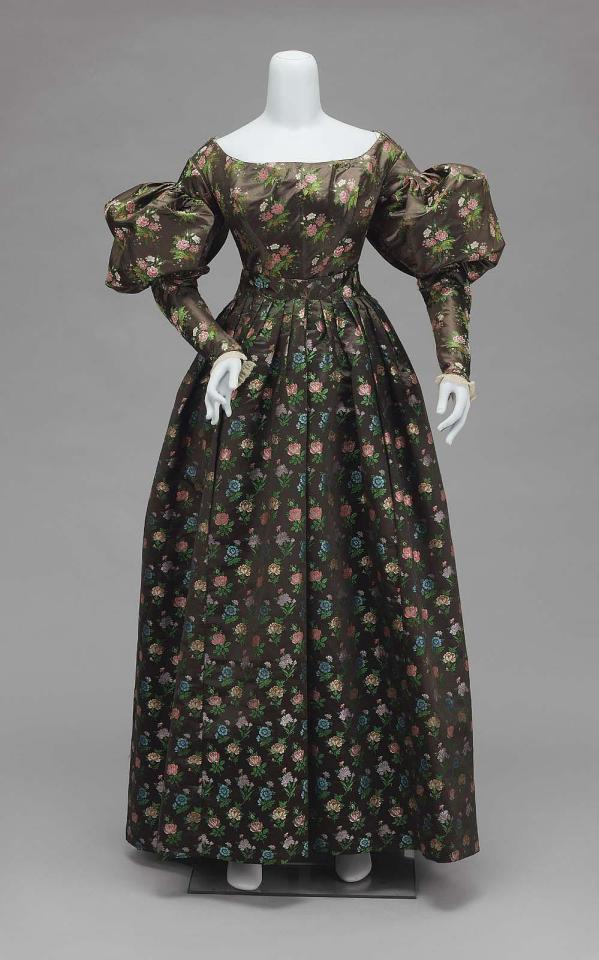
Today's Floral Friday dress is this American 1825-30 dress from the MFA Boston collection.
Description from the MFA Boston website:
"Dark brown satin bodice with all over sprays of roses, candy tuft and other small flowers brocaded with polychrome silks, short waisted, with wide flaring neck, hooked down centre back, long straight undersleeves with short full puffed oversleeves, boned and lined with white linen; narrow ruching of stiffened sheer cotton at edge of sleeves. Tag saying, Mrs. Inches."
#1820s#romantic era fashion#19th century fashion#fashion history#1830s#silk#satin dress#floral dress
166 notes
·
View notes
Text

Title: Underdress
Date: ca. 1835
Culture: American
Medium: cotton
#historical fashion#fashion history#19th century fashion#19th century#romantic era fashion#romantic era#1830s fashion#1830s dress#extant garments
8 notes
·
View notes
Text

The Farewells, James Tissot. 1872.
#aesthetic#art#art history#victorian#fashion#historical fashion#victorian aesthetic#historical art#women in art#Victorian fashion#Victorian era#women#romance#romance aesthetic#men#men in art#romantic#romance painting#romantic aesthetic#1870s#1870s aesthetic#1870s fashion#dress#gowns#grey#grey aesthetic
305 notes
·
View notes
Photo

1846 Cécile Mendelssohn Bartholdy by Eduard Magnus (Staatsbibliothek Preußischer Kulturbesitz - Berlin, Germany). From Google search; cropped frame & removed spots & flaws w Pshop & fit to screen 958X1400 @96 507kj.
#1846 fashion#early Victorian fashion#Romantic era fashion#Cécile Mendelssohn Bartholdy#Eduard Magnus#straight hair#bun#side curl coiffure#Y part#chemise#off shoulder scoop neckline#pleated bertha#Vdécolletage#long close sleeves#brooch#pardessus
464 notes
·
View notes
Text
Woman's dress
1825–30, American
Silk brocaded satin, net trim, and glazed linen lining


Dark brown satin bodice with all over sprays of roses, candy tuft and other small flowers brocaded with polychrome silks, short waisted, with wide flaring neck, hooked down center back, long straight undersleeves with short full puffed oversleeves, boned and lined with white linen; narrow ruching of stiffened sheer cotton at edge of sleeves. Tag saying, Mrs. Inches.
MFA Boston
226 notes
·
View notes